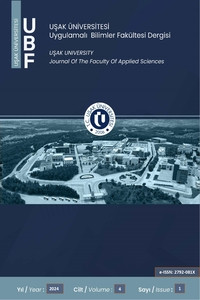Öz
The concept of intelligence refers to information and news found in a raw state, which, after being classified, processed, and interpreted, results in the production of information or a product. States or organizations gather the needed information through various activities and methods throughout the process, named the intelligence cycle, from obtaining raw data to processing it into information or a product. States/Organizations use the information they obtain as a strategic element in both their internal and external threats, security strategies, foreign policies, decision-making processes, as well as in any activities related to the target country/organization. In the intelligence collection process, various methods and elements are used, and one of the most important elements of this process is the Religious and Sectarian factor. States evaluate religious and sectarian factors in areas such as internal security, ethnic-sectarian issues, counterterrorism, international relations, education, culture, etc., contributing to the strategic decision-making process. Iran is also one of the states that stands out with the religious and sectarian factor. Iran benefits from its official Shiite denomination in its legal and state structure, internal and foreign policies, as well as security strategies, and conducts activities for this purpose on Shiite groups living in other countries. This article provides a detailed analysis of the use of religion and sect as an significant intelligence element, focusing on Iran's activities through the Shiite population in Pakistan and India, using open intelligence sources and the case analysis method.
Anahtar Kelimeler
Kaynakça
- Abbas H. (2010). Shiism and Sectarian Conflict in Pakistan: Identity Politics, Iranian Influence and Tit-for-Tat Violence, Belfer Center Combating Terrorism Center Press.
- Andrew C. Aldrich R.J, Wark W. K. (2019) Secret intelligence. Routladge Press.
- Brett, D. (2016). Iran’s fifth column in India. Access date: 17.07.2019, http://english.alarabiya.net/en/features/2016/12/28/Iran-s-Fifth-Column-in-India.html
- Dhume, S. (2015). India can’t remain blind to shia radicalism. Access date: 17.07.2019, https://blogs.wsj.com/indiarealtime/2015/04/11/india-cant-remain-blind-to-shia-radicalism/ Majidyar, A.K. (2014). 'The shi’ites of Pakistan: A minority under siege. M.Rubin and A.K.Majidyar (Ed.). The Shi’ites of the Middle East: An Iranian Fifth Column? içinde (126-139). American Enterprise Institute.
- Rathore, S.A. (2017). The Saudi-Iran factor in Pakistan’s sunni-shia conflict. Access date: 20.07.2019, https://www.mei.edu/publications/saudi-iran-factor-pakistans-sunni-shia-conflict
- Rizvi,S.A.A. (2017). Population of shia ithna ashri community in India: Case study of lucknow. IOSR Journal Of Humanities And Social Science (IOSR-JHSS), 22(9), 16-21. doi: 10.9790/0837-2209031621.
- Stratfor (2003). Pakistan: A new wave of sunni-shiite violence? Access date; 20.07.2019, https://worldview.stratfor.com/article/pakistan-new-wave-sunni-shiite-violence
- Vatanka, A. (2012). The guardian of Pakistan's shia. Access date: 21.07.2019, https://www.hudson.org/research/9863-the-guardian-of-pakistan-s-shia)
- Zaidi, A. (2016). The shias of Pakistan: Mapping an altruistic genocide. J. Syed, E. Pio, T. Kamran and A. Zaidi (Ed.). Faith-Based Violence and Deobandi Militancy in Pakistan içinde (ss. 273-311). Palgrave Macmillan London.
Öz
İstihbarat kavramı, ham bir şekilde bulunan bilgi ve haberlerin, tasnif edilmesi, işlenmesi ve yorumlanması sonucunda üretilen enformasyon veya ürün anlamına gelmektedir. Devletler veya örgütler ihtiyaçları olan bu bilgileri, istihbarat çarkı olarak isimlendirilen ve ham bilginin elde edilmesinden bunun işlenerek bir enformasyona/ürüne dönüşmesine kadar geçen süreçteki çeşitli faaliyet ve yöntemlerle toplamaktadır. Devletler/Örgütler elde ettikleri bu bilgileri hem kendilerine yönelebilecek olan iç ve dış tehditler, güvenlik stratejileri, dış politikaları ve karar alma süreçlerinde hem de hedef ülke/örgüt üzerindeki her türlü faaliyetlerinde stratejik bir unsur olarak kullanmaktadırlar. İstihbarat toplama sürecinde birçok yöntem ve unsur kullanılıyor olmakla birlikte, bu sürecin en önemli unsurlarından bir tanesi de Din ve Mezhep unsurudur. Devletler, din ve mezhep unsurlarını iç güvenlik, etnik-mezhepsel sorunlar, terörle mücadele, uluslararası ilişkiler, eğitim, kültür vb. alanlarda değerlendirerek stratejik karar alma süreçlerine katkı sağlamaktadır. İran, din ve mezhep faktörü ile ön plana çıkan devletlerden bir tanesidir. İran hem hukuk ve devlet yapılanmasında hem iç ve dış politikasında hem de güvenlik stratejilerinde resmi mezhebi olan Şiilikten faydalanmakta ve diğer ülkelerde yaşayan Şii gruplar üzerinde bu amaçla faaliyetler gerçekleştirmektedir. Bu makale, açık istihbarat kaynakları ve vaka analizi yönteminden faydalanarak, din ve mezhebin önemli bir istihbarat unsuru olarak kullanılması konusunda, İran’ın Pakistan ve Hindistan’daki Şii nüfus üzerinden gerçekleştirdiği faaliyetler üzerine detaylı bir analiz sunmaktadır.
Anahtar Kelimeler
Kaynakça
- Abbas H. (2010). Shiism and Sectarian Conflict in Pakistan: Identity Politics, Iranian Influence and Tit-for-Tat Violence, Belfer Center Combating Terrorism Center Press.
- Andrew C. Aldrich R.J, Wark W. K. (2019) Secret intelligence. Routladge Press.
- Brett, D. (2016). Iran’s fifth column in India. Access date: 17.07.2019, http://english.alarabiya.net/en/features/2016/12/28/Iran-s-Fifth-Column-in-India.html
- Dhume, S. (2015). India can’t remain blind to shia radicalism. Access date: 17.07.2019, https://blogs.wsj.com/indiarealtime/2015/04/11/india-cant-remain-blind-to-shia-radicalism/ Majidyar, A.K. (2014). 'The shi’ites of Pakistan: A minority under siege. M.Rubin and A.K.Majidyar (Ed.). The Shi’ites of the Middle East: An Iranian Fifth Column? içinde (126-139). American Enterprise Institute.
- Rathore, S.A. (2017). The Saudi-Iran factor in Pakistan’s sunni-shia conflict. Access date: 20.07.2019, https://www.mei.edu/publications/saudi-iran-factor-pakistans-sunni-shia-conflict
- Rizvi,S.A.A. (2017). Population of shia ithna ashri community in India: Case study of lucknow. IOSR Journal Of Humanities And Social Science (IOSR-JHSS), 22(9), 16-21. doi: 10.9790/0837-2209031621.
- Stratfor (2003). Pakistan: A new wave of sunni-shiite violence? Access date; 20.07.2019, https://worldview.stratfor.com/article/pakistan-new-wave-sunni-shiite-violence
- Vatanka, A. (2012). The guardian of Pakistan's shia. Access date: 21.07.2019, https://www.hudson.org/research/9863-the-guardian-of-pakistan-s-shia)
- Zaidi, A. (2016). The shias of Pakistan: Mapping an altruistic genocide. J. Syed, E. Pio, T. Kamran and A. Zaidi (Ed.). Faith-Based Violence and Deobandi Militancy in Pakistan içinde (ss. 273-311). Palgrave Macmillan London.
Ayrıntılar
| Birincil Dil | İngilizce |
|---|---|
| Konular | Kamu Ekonomisi |
| Bölüm | Araştırma Makaleleri |
| Yazarlar | |
| Yayımlanma Tarihi | 2 Temmuz 2024 |
| Gönderilme Tarihi | 27 Kasım 2023 |
| Kabul Tarihi | 22 Ocak 2024 |
| Yayımlandığı Sayı | Yıl 2024 Cilt: 4 Sayı: 1 |


